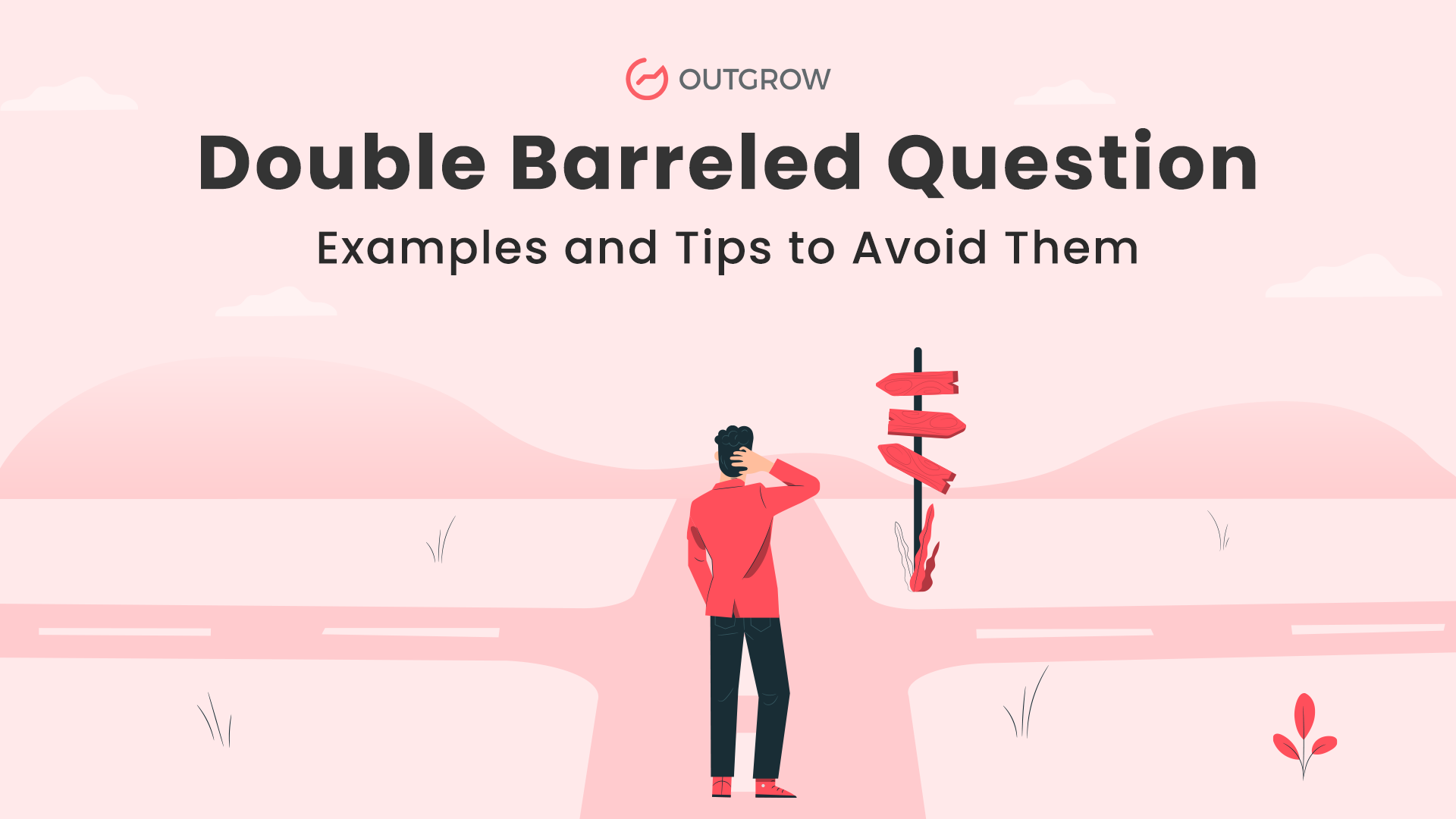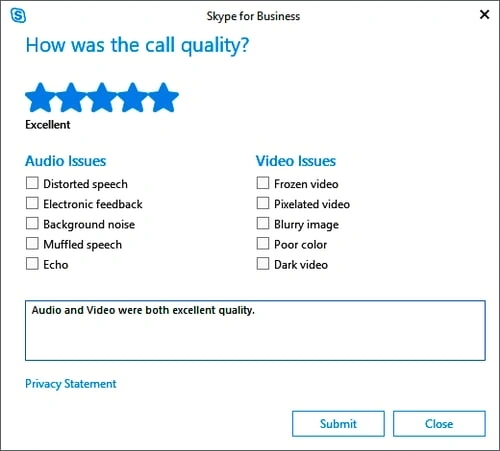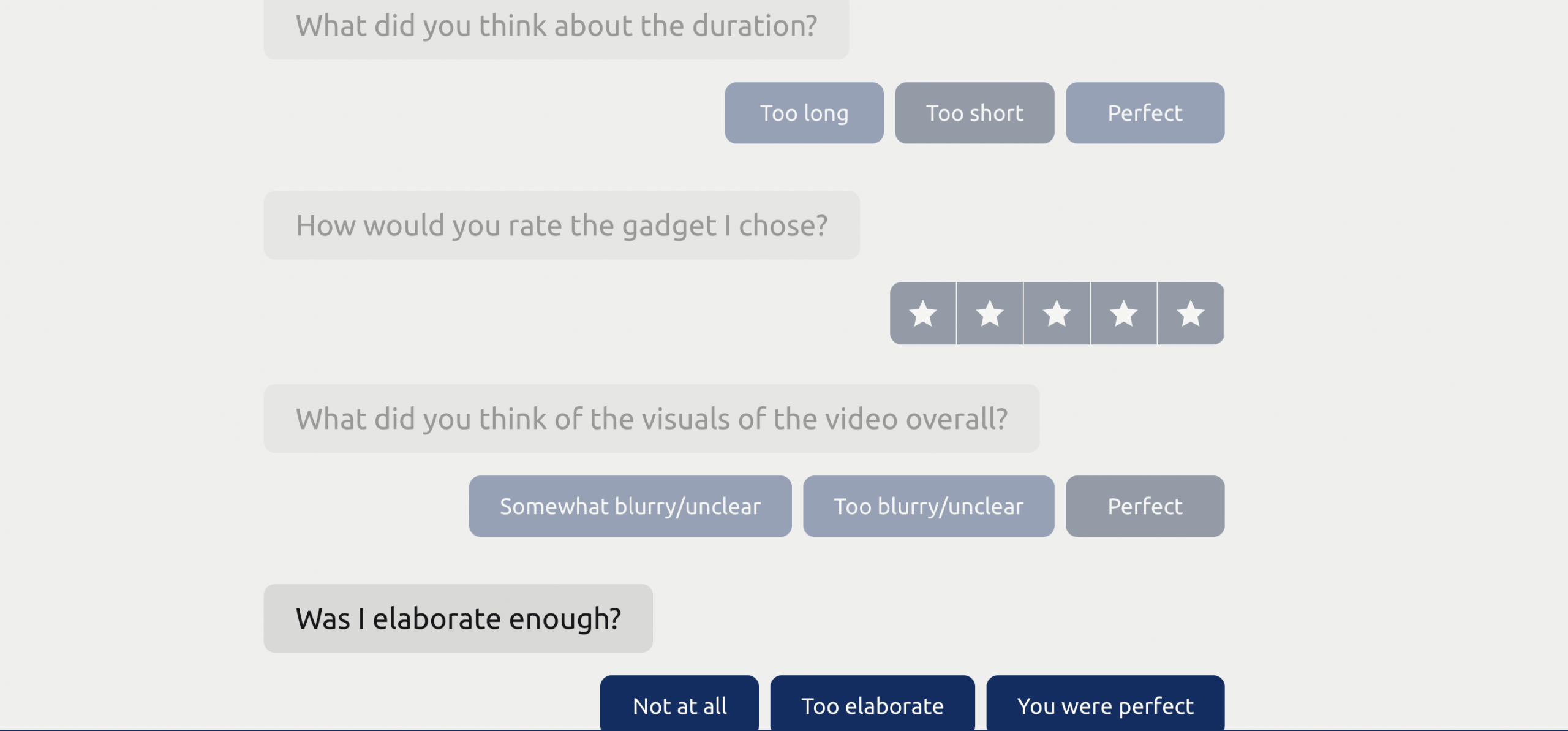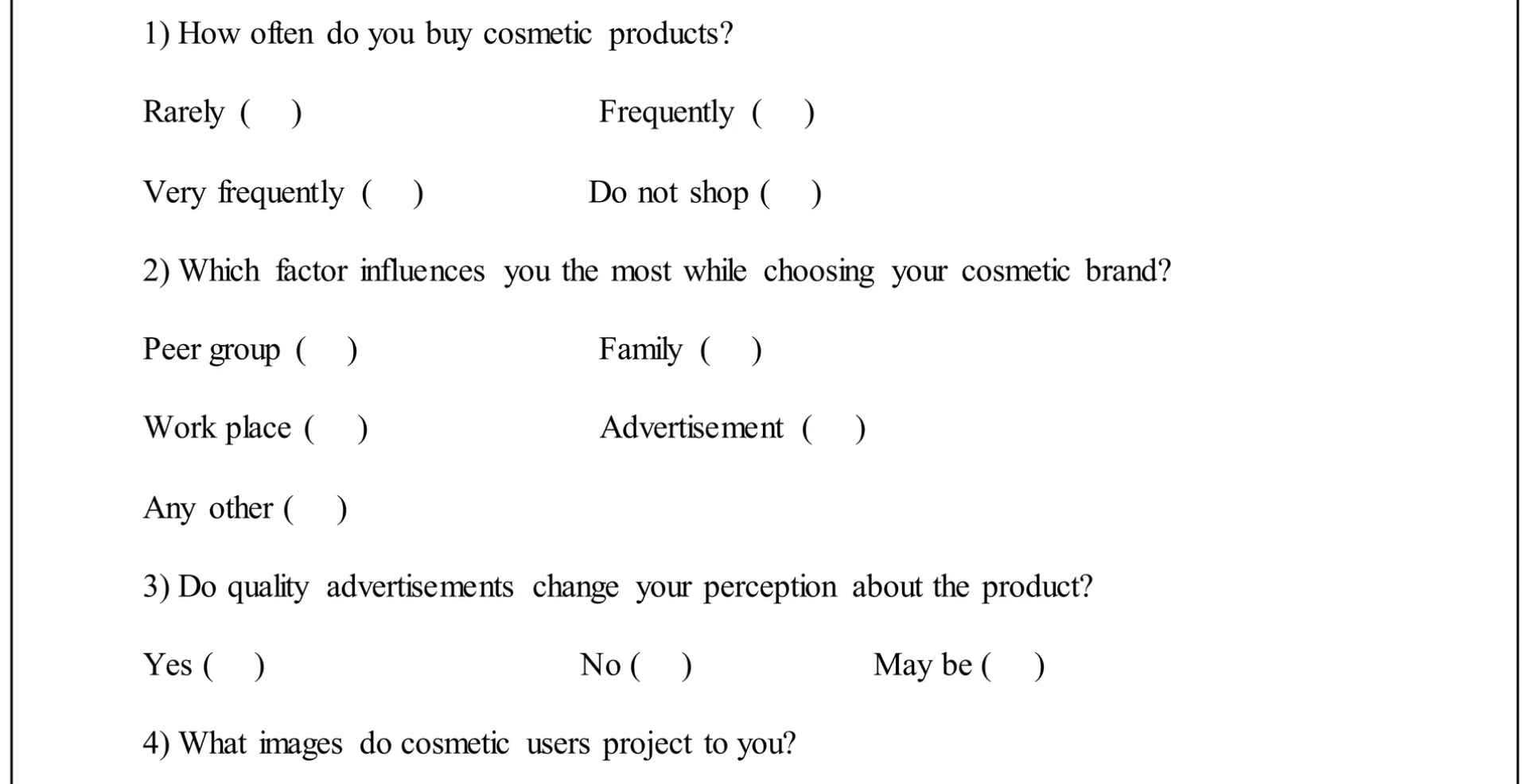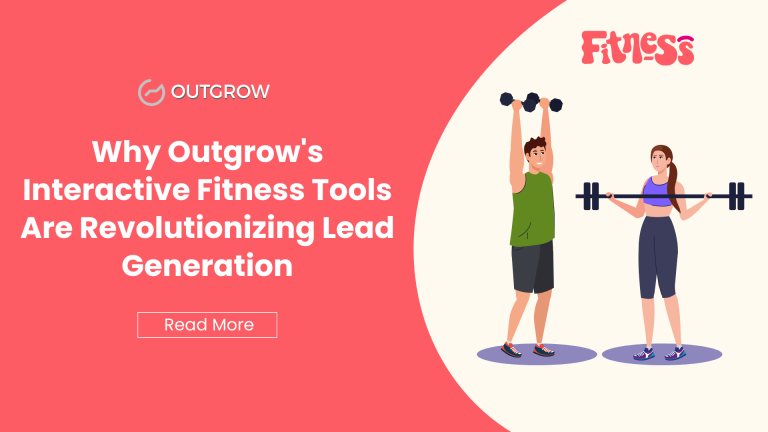Double Barreled Question: Examples and Tips to Avoid Survey Pitfalls
Table of Contents
Have you ever encountered a question that confused you, not because you didn’t understand it, but because it was confusingly worded? It could be one of those cleverly disguised questions that combine two distinct inquiries – also known as a double barreled question.
As Andrew Greeley has rightly said, “Everyone takes surveys. Whoever makes a statement about human behavior has engaged in a survey of some sort.“
Now, imagine your employees or customers facing this scenario when you’re surveying them about their experience with your company.
You don’t want that, right?
On the contrary, you want to conduct research that clarifies, enabling you to gain valuable insights that help you improve your services or products.
Hence, it’s vital to understand the impact of a double barreled question. In this comprehensive guide, we’ll discuss what double barreled question is, its examples, and how to avoid it.
So, let’s get started!
What Is a Double Barreled Question?
A double barreled question, also known as a composite or double direct question, combines two separate topics but requires only one answer.
It can arise accidentally during the market or customer research process in an attempt to shorten the questionnaire by combining two questions into one.
A double barreled question can create confusion and ambiguity in respondents’ answers. This is because they need to deal with two issues with one answer.
This can lead to inaccurate or misunderstood data, making it difficult to draw reliable and meaningful results from the study.
The use of “and” is usually a vital indicator of a double-barrel question. However, it is not an absolute rule. To better understand the concept, let’s examine some examples.
Examples of a Double-Barreled Question
1. Customer Satisfaction
In a customer satisfaction survey, it is essential to ask clear and focused questions to gather accurate and meaningful feedback from respondents.
A double barreled question can lead to confusion and biased responses because respondents may have different opinions or experiences about each aspect of the question.
Let’s look at these examples.
- “Do you like our products and customer service?”
- “Please rate our store’s cleanliness and our staff’s friendliness.”
The first question combines two separate aspects – product quality and customer service. The second question addresses both store cleanliness and staff friendliness.
Respondents may have different opinions or experiences about these aspects, making it difficult to provide a precise and accurate response.
Correct Questions:
- “Do you like our products?”
- “Do you like our customer service?”
- “Please rate our store’s cleanliness.”
- “Please rate our staff’s friendliness.”
2. Employee Engagement
Employee engagement surveys should be clear and concise, with questions focusing on specific areas of employee satisfaction. A double barreled question can complicate the survey results.
How?
Respondents may disagree or have different opinions about each aspect of the question. Let’s understand this with some examples.
Here is a question: “Do you feel valued by your superiors and the entire company?” This question combines two separate aspects:
- Feeling valued by the manager
- Feeling valued by the company as a whole
Employees may feel valued by their immediate manager but not necessarily by the company. This is due to factors like company policies, communication from higher-ups, etc.
Similarly, they might feel valued by the company but need a positive relationship with their manager. The same issue applies to the second question: “Are you satisfied with your salary and the work-life balance in the organization?”
This question covers two different aspects:
- Satisfaction with salary
- Satisfaction with work-life balance
Employees could be satisfied with their salary but have issues with their work-life balance, or vice versa. To gather more accurate and useful data, it’s better to split these double barreled questions into separate questions. Here’s how you can do it:
- “Do you feel valued by your manager?”
- “Do you feel valued by the company as a whole?”
- “Are you satisfied with your salary?”
- “Are you satisfied with your work-life balance?”
By asking these questions individually, employees can provide more specific feedback on each aspect, allowing you to address their concerns more effectively.
3. Product/Service Usage
Understanding how customers use a product or service can help businesses improve their offerings and customer experience. But if you cannot accurately measure product or service usage? You cannot make the essential changes.
A double barreled question can give you a false sense of clarity and understanding. Let’s understand this with examples.
- “How frequently do you use our website and app to buy products?”
- “Do you believe our products are safe and simple to use?”
Here, both the questions address different aspects of the product/service. The first part asks about the frequency of usage for both the mobile app and the website. The second part asks about the respondent’s perception of the product’s reliability and ease of use.
The problem with this double-barreled question is that respondents might use the app more often than the website or vice versa. Additionally, some users might find the product reliable but not easy to use or easy to use but unreliable.
These nuances can lead to ambiguous responses, making it challenging for the surveyor to understand the issues or improvements needed.
Correct Questions:
- “How frequently do you use our mobile app to buy products?”
- “How frequently do you use our website for buying products?”
- “Do you find our product reliable?”
- “Do you find our product easy to use?”
Respondents can provide clearer feedback on each aspect by breaking the original question into separate, more specific questions.
4. Training Evaluation
In every organization, there is a need to evaluate the effectiveness of training programs. Whether you are using the traditional classroom teaching style or modern technology-aided training, you need to assess if your participants are engaged and learning. But a double barreled question can become a hurdle in this process.
For your better understanding, look at this question. “How well did you like the training material, and was the instructor knowledgeable?”
Here, the first part asks about the effectiveness of the training material in covering the course content.
Users can provide insights into whether the material was comprehensive and relevant to their learning needs. The second part of the question focuses on the instructor’s knowledge.
Participants can express their opinions on the instructor’s expertise, teaching style, and ability to address questions or concerns during the training sessions.
Here is another example. “Was the training facility comfortable, and were the breaks provided at appropriate intervals?”
Here, the first part asks about the comfort of the training facility itself, and the second part addresses the breaks provided during the training sessions. It is essential to separate these questions because respondents may have different experiences and opinions about each aspect.
By asking them separately, respondents can provide specific feedback on the training material and the instructor, as well as the training facility and break intervals.
Correct Questions:
- “How well did you like the training material?”
- “How well was the instructor knowledgeable?”
- “Was the training facility comfortable?
- “Were the breaks provided at appropriate intervals?”
This enables training organizers to understand what worked well and what areas may need improvement, leading to a more effective and successful training program in the future.
6. Marketing and Advertising
Every brand needs to do market research to identify its target audience and understand what motivates them.
A double barreled question can lead to unclear answers from consumers. And we all know clarity is key when it comes to advertising. Let’s have a look at these sets of questions from the marketing and advertising industry.
- “Did you find our TV ad entertaining and convincing?”
- “Please rate the clarity of our print ad and the attractiveness of the graphics.”
Question 1: “Did you find our TV ad entertaining and convincing?”
This question combines two aspects of the TV commercial – entertainment and persuasion. Respondents might need help to provide distinct feedback, as entertainment doesn’t necessarily imply influence.
To improve clarity, it’s better to ask two questions:
- “Did you find our TV commercial entertaining?”
- “Did you find it persuasive?”
Question 2: “Please rate the clarity of our print ad and the attractiveness of the graphics.”
This question addresses the print ad’s clarity and graphics’ attractiveness simultaneously. However, respondents’ opinions on each element may differ. To avoid confusion and gather more precise feedback, it’s advisable to ask two individual questions:
- “Please rate the clarity of our print ad.”
- “Please rate the attractiveness of the graphics in our print ad.”
7. Political Survey
Politics is a complex topic, and surveys about political issues can be difficult to design. A double barreled question is especially problematic in this area. Here are the examples.
- “Are you happy with the government’s way of handling social welfare programs and steps to support vulnerable populations?”
- “Do you have faith in the government to prioritize and give funds for public infrastructure development?”
The two questions provided suffer from being double-barreled, combining multiple inquiries into one.
In the first question, the government’s handling of social welfare programs and support for vulnerable populations might not align with the respondents’ satisfaction.
Respondents may have different opinions on each aspect, but the question fails to distinguish between them. Similarly, the second question combines trust in the government’s ability to prioritize and allocate funds appropriately for public infrastructure development.
People might trust the government’s decision-making but have concerns about fund allocation. So, what would be the correct version of these political survey questions?
Correct Questions:
- Are you satisfied with the government’s handling of social welfare programs?
- Are you satisfied with the government’s initiatives to support vulnerable populations?”
- Do you trust the government to prioritize funds appropriately for public infrastructure development?”
- Do you trust the government to allocate funds appropriately for public infrastructure development?”
Why Shouldn’t You Use a Double Barreled Question in Your Surveys?
We hope now you are a bit clear about why “Why shouldn’t use a double barreled question in your surveys.” However, for more clarification, here are some more reasons behind it.
For instance, have you ever encountered ambiguity while analyzing survey data due to double-barreled questions? It can be quite challenging to disentangle the responses, don’t you agree? Let’s take this example.
Can you see what makes it a double barreled question? How would someone reply if they asked if their classes were more demanding but less interesting as compared to their high school classes?
Or less demanding but more interesting? This is because it has both the words “demanding” and “interesting.” And there is no way to respond yes to one but no to the other.
And let’s not forget about the potential response bias caused by these tricky questions. Respondents might lean towards one part of the question, ignoring the other, leading to unreliable data. Have you experienced this issue in your surveys before?
Another reason you should avoid using a double barreled question in a survey is that it is lengthy. It can appear more extensive, potentially causing respondents to lose interest and abandon the survey altogether.
It’s crucial to ensure your surveys are well-structured, with clear, single-focused questions to maintain the quality of your data.
Look at this example. Skype uses a straightforward customer satisfaction survey with three properly segregated questions. They ask about ‘Audio Issues’ and ‘Video Issues’, keeping the focus on their product.
Not only this, if you are in the healthcare industry, you can create a patient satisfaction survey like this: “Patients/customers satisfaction survey.”
How to Avoid Double Barreled Questions?
Let’s discuss some practical tips on avoiding a double barreled question in your surveys. You’ll find that crafting effective survey questions can be a game-changer for obtaining valuable insights from your respondents.
1. Break It Down
Consider your survey objectives and break down complex ideas into separate, clear questions. For instance, if you want to know about product satisfaction and customer service, why not ask two questions to understand each aspect better?
Here is an example.
The survey has short questions that are divided into different parts. This way, you can get more precise responses.
2. Focus on a Single Subject
Another tip to keep your surveys interesting is to use questions that are based on one subject or topic. This will help you avoid merging multiple issues into one confusing question. Here is a perfect example of this.
This survey has the motive to know consumer behavior on cosmetic products, and none of the questions are related to any other subject than cosmetic products. This is an effective way to create surveys that are focused and interesting.
3. Get Feedback
Have you ever asked others to review your survey questions to ensure clarity? If not, you should start doing it and make it a mandatory practice.
Before finalizing your survey questions, consider seeking feedback from colleagues or friends. They might spot a potential double barreled question you missed and offer valuable suggestions.
4. Avoid Leading Language
Have you ever encountered surveys that seemed to nudge you toward a specific response?
Be cautious with the phrasing of your questions. Avoid leading respondents towards a particular answer, as this can introduce bias into the data. We’ll learn more about this later in the blog.
5. Revise and Edit
By carefully editing and refining each question, you can enhance the survey’s clarity, making it easier for participants to comprehend and respond accurately.
Clear and concise questions will ultimately yield more meaningful insights and contribute to the success of the research study. Take the time to edit any questions that appear to combine multiple ideas.
What Are Some Other Survey Question Errors?
Creating an enjoyable survey experience is all about connecting with real people and ensuring their voices are heard loud and clear. To achieve this, we must avoid certain pitfalls that might lead to biased or confusing results.
Unfortunately, a double barreled question is not the only type of survey error. So, let’s understand some other common survey blunders and how to steer clear of them:
1. Leading Questions
Consider leading questions as those sly, sneaky persuaders that nudge respondents towards a particular answer.
But that’s not what you want, right? You want genuine, honest feedback. So, instead of using loaded adjectives like “fantastic” or “amazing,” let’s focus on neutral words that allow respondents to share their true opinions.
Example of a leading question: “How much did you like our amazing product?”
Revised: “What are your thoughts on our product?”
2. Loaded Questions
Loaded questions are tricky because they secretly suggest something that might not be true. They kind of force the person to answer in a way that makes it seem like the suggestion is true, even if it’s not.
Imagine someone asking you, “Did you finally stop eating all the cookies?” This question assumes you’ve been eating too many cookies before, even if you haven’t.
If you answer, “Yes, I stopped,” it sounds like you’re admitting to eating a lot of cookies, even if you didn’t. It’s a way to make you seem guilty of something, even though you might not be.
Here is another example of a loaded question. “Some say XYZ hospital doesn’t offer a high quality of patient care; what do you think about XYZ hospital?
Here, the issue is that the survey forms a negative tone for a poor image of XYZ Hospital.
3. Absolutes
Life is rarely black and white, and so is the case with people’s opinions. Therefore, instead of forcing respondents into “always” or “never” answers, give them the freedom to express their thoughts with more nuanced responses.
Example of a question with absolutes: “Do you always work on Saturdays?”
Revised: “How frequently do you work on Saturdays?”
4. Bias
Bias in surveys refers to systematic errors that lead to inaccurate results. For example, a question like “Did you find our user interface easy to navigate and intuitive?” may initiate “Social Desirability Bias.” This is because it presumes a positive response.
To avoid such biased surveys, you can rephrase questions like “How would you rate the ease of navigation and intuitiveness of our user interface?” This lets respondents give more honest feedback, ensuring excellent reliability and validity.
5. Ambiguous Language
Like a friendly conversation, we want our survey questions to be crystal clear. When questions are vague, they can leave respondents scratching their heads. And that’s not the kind of engagement we’re looking for.
Here is an example of an ambiguous question: “If X plays a game of badminton with Y, and he’s a champion player, will he win?”
Revised: “Who do you think will win the badminton game between X and Z?”
6. Confusing Questions
Let’s be honest; confusion is never fun.
Your survey questions must be easy to understand. If respondents can’t understand what you are asking, the results won’t be very useful or accurate. So keep it simple and use plain language that doesn’t leave respondents scratching their heads in confusion.
Example of a confusing question: “Did you like your onboarding experience, or was it bad?”
Revised: “Please share your feedback on your onboarding experience.”
Revolutionize Your Surveys With Outgrow’s Cutting-Edge AI Tool
Outgrow is a time-tested survey maker tool designed to transform how you conduct surveys and gather valuable insights. The tool is easy to use and has fantastic features. It helps you ask questions in a way that makes people want to answer. 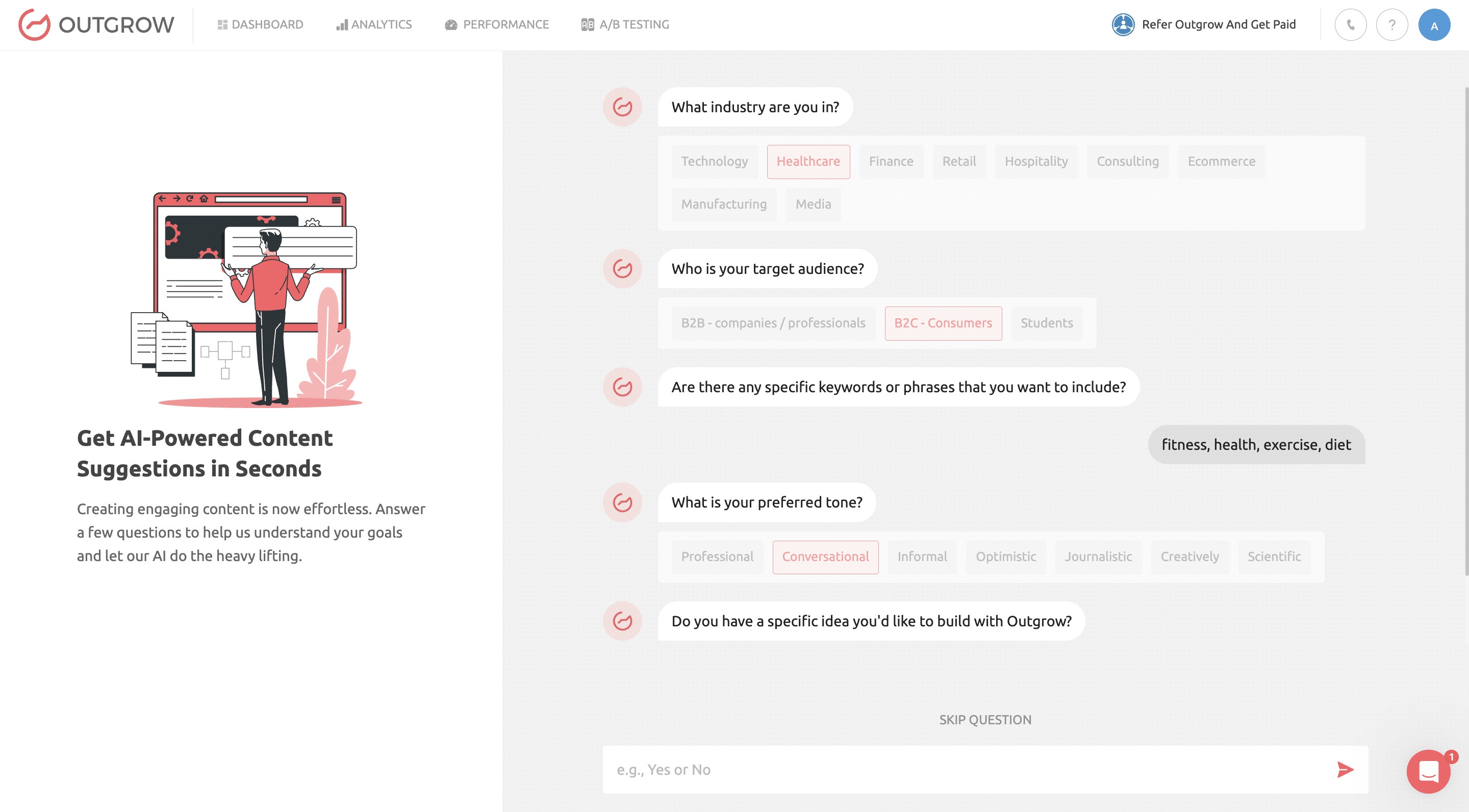
Besides, if you often find yourself running out of ideas for survey questions, Outgrow’s AI feature could be a game-changer. The tool just asks you a few questions about your industry, target audience, and keywords and suggests a range of survey titles, questions, and results for you to pick from.
From there, your customized survey is generated effortlessly, saving you time and effort. The best part of using an AI survey maker is that it helps you generate more accurate questions that are free from errors, making it easy to collect the data you need.
Plus, using a variety of Outgrow’s pre-designed templates, you can create any type of survey you need. Embrace the ease and efficiency of Outgrow’s AI-powered survey tool and unlock a whole new level of surveying!
Conclusion
When conducting surveys, it’s crucial to avoid a double barreled question to ensure accurate and meaningful data collection. Outgrow’s innovative AI tool solves this challenge, empowering businesses to create 2X engaging and interactive content experiences.
With Outgrow, you can easily craft clear and focused questions, gaining valuable insights to enhance your company’s success. Sign up for a 7-day trial and discover the power of the tool.
If you’re a student or a freelancer, you can also try out Outgrow’s free survey plan!

